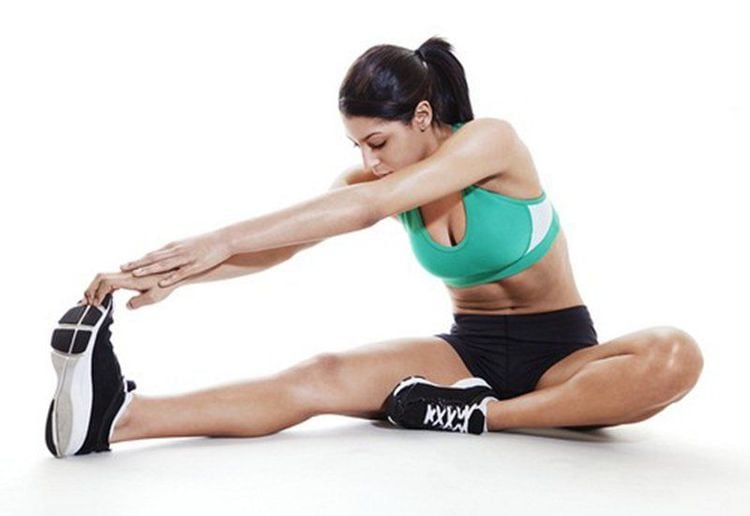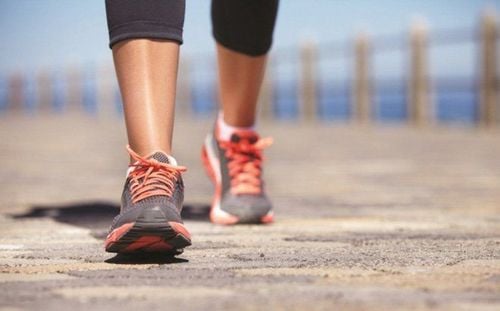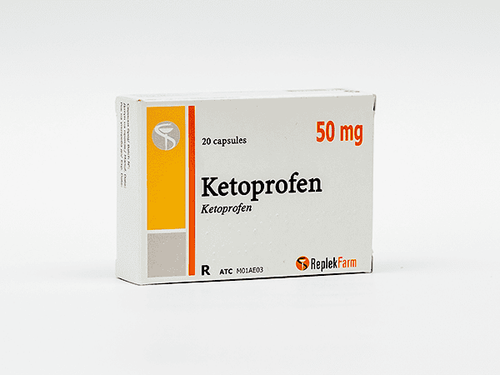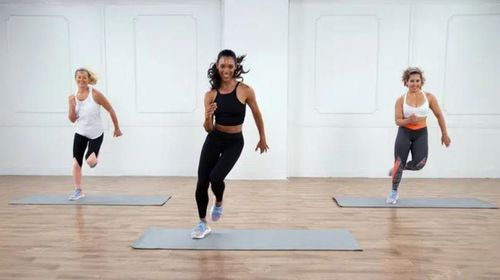This is an automatically translated article.
Warm-ups and cool-downs are thought to be great for your exercise performance. Then, you will perform better, faster, stronger and your heart will also be strengthened when performing these exercises. At the same time, this is also an exercise that helps reduce the risk of injury that may occur during your practice.1. A few problems with aerobic training
Before you step on the elliptical or run on the track, consider a short warm-up first. Also think about tracking your workout with quick release. Because, studies suggest that warming up before aerobic exercise and relaxing during exercise should add a few minutes to your exercise routine, as they can also reduce strain on the heart and muscles. other of your body.Warming up well before exercise will dilate blood vessels, ensuring that your muscles are adequately supplied with oxygen. It also increases your muscle temperature for optimal flexibility and efficiency. By slowly increasing your heart rate, a warm-up also helps to minimize the strain on your heart.
The president of the New York Heart Association says: Warming up before a workout or sport is crucial to preventing injury and preparing your body. Stretching the muscles allows for a greater range of motion and reduces stress on joints and tendons, potentially preventing injury. He also believes that it is also important to relax during exercise. Because this activity keeps the blood circulating throughout the body. Stopping exercise suddenly can cause dizziness because your heart rate and blood pressure are dropping rapidly.

Khởi động kỹ trước khi tập luyện sẽ làm giãn mạch máu, đảm bảo rằng các cơ của bạn được cung cấp đầy đủ oxy
2. Why warm up and relax for aerobics exercises
Aerobic warm-up and relaxation during exercise typically involves performing your activity at a slower pace and with reduced intensity.Prepare for aerobic exercise by warming up your body to prepare to start performing aerobic activities. Warm-up will gradually restore your cardiovascular system by increasing your body temperature and increasing blood flow to your muscles. Warming up can also help relieve muscle soreness and reduce the risk of injury.
Relaxing muscles after exercise allows gradual recovery of heart rate and blood pressure before exercise. Loosening may be most important for competitive endurance athletes, such as marathon runners, as it helps athletes regulate blood flow. Cooling down doesn't seem to help with muscle stiffness and soreness after a workout, but more research is needed.
Although there is controversy about whether warming up before exercise and relaxing during exercise can prevent injury, proper relaxation and release poses little risk. Plus, they seem to make it easier for your heart and blood vessels to engage in and finish an exercise session. So, if you have the time, consider adding a warm-up and relaxing into your workout routine.

Khởi động aerobic và thả lỏng cơ thể trong quá trình luyện tập thường liên quan đến việc thực hiện hoạt động của bạn
3. How to warm up for aerobics
You should be ready to warm up just before you plan to start working out. In general, you should warm up first by focusing on large muscle groups, such as the hamstrings. You can then do exercises more specific to your sport or activity, if needed.Start by doing the activity and movement pattern of your chosen exercise, but at a low, slow pace and gradually increase in speed and intensity. This is called a warm-up. Warm-ups may produce a slight sweat, but generally won't make you tired. Here are some examples of warm-up activities:
To warm up to a brisk walk, walk slowly for 5 to 10 minutes. To warm up while running, take a brisk walk for 5 to 10 minutes. To warm up when swimming, swim slowly at first, then choose a pace that suits your ability.

Để khởi động cho việc đi bộ nhanh, hãy đi bộ chậm trong 5 đến 10 phút
4. The relaxation during aerobic exercise
Relaxing during exercise is similar to the process of warming up before performing exercises. You usually continue your workout for five minutes or so, but at a slower pace and with reduced intensity. Here are some examples of relaxation activities:To loosen up after a brisk walk, walk slowly for 5 to 10 minutes. To loosen up after a run, go for a brisk walk for 5 to 10 minutes. To loosen up after a swim, swim laps for 5 to 10 minutes. If stretching exercises are included as part of your workout routine, it's best to do them after a warm-up or cool-down period. This can be explained by when your muscles are warm, stretching activities will bring good results during exercise.
Stretching exercises can also improve joint flexibility and range of motion. Furthermore, this exercise can also help improve your performance in certain activities by allowing your joints to move throughout their full range of motion. However, studies have yet to show that stretching helps prevent muscle soreness or injury.
To get a good effect for the process of performing aerobics, you can find time for these exercises regularly along with doing a warm-up before exercising and relaxing during the exercise. This can be a challenge. But with a little creativity, you can apply some activities that help match this requirement. For example, walking to and from the gym can be your way to warm up and cool down.
Please dial HOTLINE for more information or register for an appointment HERE. Download MyVinmec app to make appointments faster and to manage your bookings easily.
Reference source: mayoclinic.org












